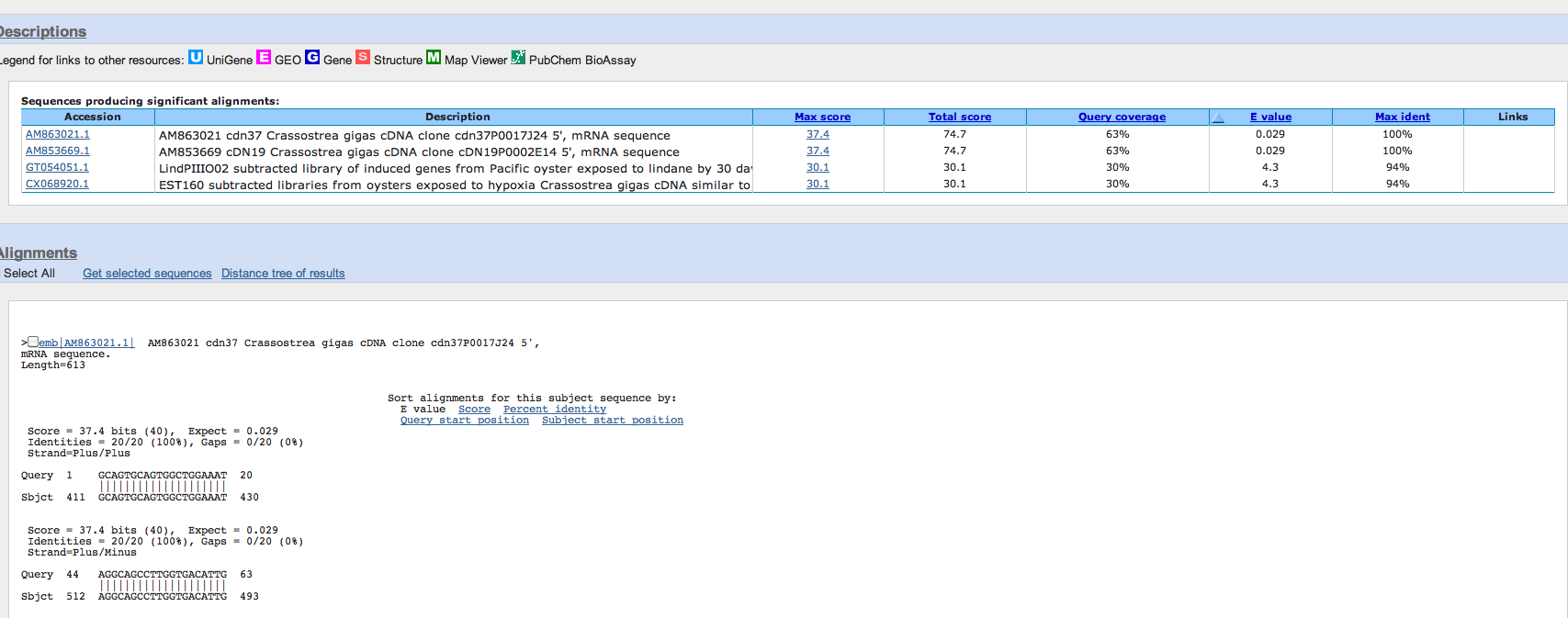Due to previous contamination issues with Emma’s primers, Emma asked me to order new primers, reconstitute them and run a qPCR for her to see if we could eliminate her contamination issues with this primer set. cDNA template was supplied by Emma (from 2/2/11) and was from a C.gigas 3hr Vibrio vulnificus challenge. Samples were run in duplicate, as requested. Master mix calcs are here. Plate layout, cycling params, etc. can be found in the qPCR Report (see Results). Primer set used was:
Cg_3KDSqPCR_F/R (SR IDs: 1186, 1187)
Results:
qPCR Data File (BioRad CFX96)
qPCR Report (PDF)
The negative controls (NTC) are negative, meaning they do not cross the threshold set by the BioRad software. However, there is clearly amplification in the NTCs, but they come up late enough that they do not cross the threshold and, thus, generate a Cq value. Additionally, the melt curve reveals peaks in the NTCs that are at the same melting temperature as the product produced in the cDNA qPCR reactions. This would potentially imply some sort of contamination, as Emma has experienced.
Honestly, I do no think contamination is the problem. I believe that the “contamination” being seen in the NTCs is actually primer dimer. Increasing the annealing temperature (I’m not sure if Emma tried this during her troubleshooting) could potentially alleviate this issue. However, I’m not sure she’s amplifying the target that she wants to. Based on my analysis, I think she needs to re-design primers for her 3KDS target. Read my analysis and why I came to this conclusion below.
It seems unlikely that two independent people (and multiple primer stock replacements!) would have contamination, so I looked in to things a bit further.
I BLASTed the primer sets (NCBI, blastn, est_others db, C.gigas only) and the BLAST results reveal the primers matching with a C.gigas EST sequence that would produce a band of only 63bp. Here’s a screen capture of the BLAST results:

This result does NOT agree with what is entered in our Primer Database. As entered in our sheet, the expected PCR product would be ~102bp. However, taking in to account the BLAST results, it would be difficult to distinguish the difference between primer dimers and PCR product in a melt curve analysis.
Emma has previously run a conventional PCR with these primers and ran a gel (see below). At the time, it was thought to be contamination, but in retrospect (knowing the results of the qPCRs and the BLAST results) it seems likely that what she’s seeing in the negative controls was actually primer dimer, which was the same size of her PCR product (which she thought should be larger). Additionally, the gel was difficult to interpret because no ladder was run. A ladder might have revealed that her PCR product was half the size that she was expecting:
